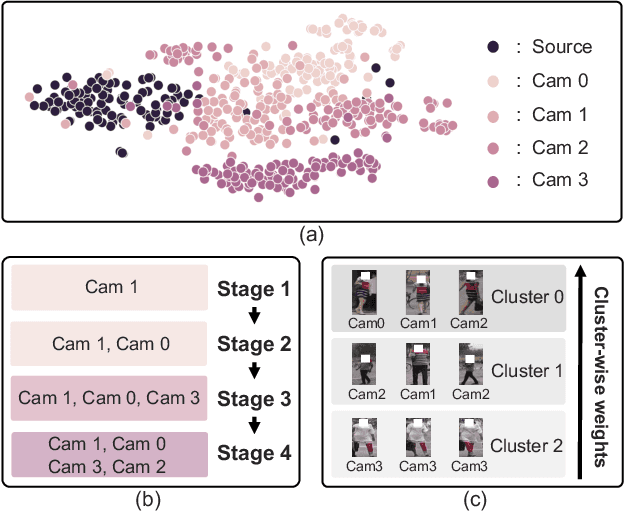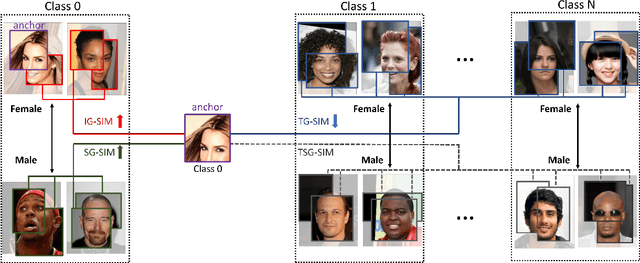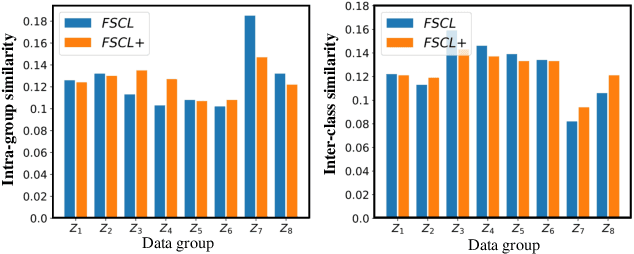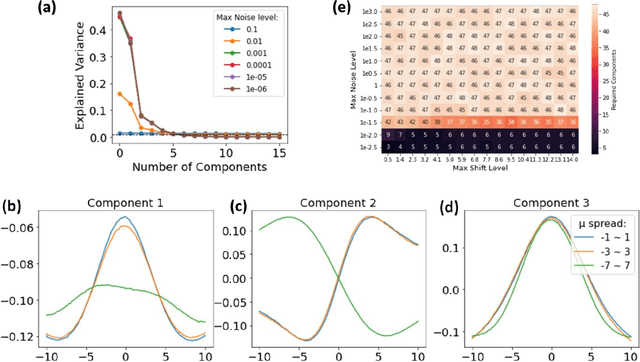Dohyung Kim
ReflAct: World-Grounded Decision Making in LLM Agents via Goal-State Reflection
May 21, 2025Abstract:Recent advances in LLM agents have largely built on reasoning backbones like ReAct, which interleave thought and action in complex environments. However, ReAct often produces ungrounded or incoherent reasoning steps, leading to misalignment between the agent's actual state and goal. Our analysis finds that this stems from ReAct's inability to maintain consistent internal beliefs and goal alignment, causing compounding errors and hallucinations. To address this, we introduce ReflAct, a novel backbone that shifts reasoning from merely planning next actions to continuously reflecting on the agent's state relative to its goal. By explicitly grounding decisions in states and enforcing ongoing goal alignment, ReflAct dramatically improves strategic reliability. This design delivers substantial empirical gains: ReflAct surpasses ReAct by 27.7% on average, achieving a 93.3% success rate in ALFWorld. Notably, ReflAct even outperforms ReAct with added enhancement modules (e.g., Reflexion, WKM), showing that strengthening the core reasoning backbone is key to reliable agent performance.
Subnet-Aware Dynamic Supernet Training for Neural Architecture Search
Mar 13, 2025Abstract:N-shot neural architecture search (NAS) exploits a supernet containing all candidate subnets for a given search space. The subnets are typically trained with a static training strategy (e.g., using the same learning rate (LR) scheduler and optimizer for all subnets). This, however, does not consider that individual subnets have distinct characteristics, leading to two problems: (1) The supernet training is biased towards the low-complexity subnets (unfairness); (2) the momentum update in the supernet is noisy (noisy momentum). We present a dynamic supernet training technique to address these problems by adjusting the training strategy adaptive to the subnets. Specifically, we introduce a complexity-aware LR scheduler (CaLR) that controls the decay ratio of LR adaptive to the complexities of subnets, which alleviates the unfairness problem. We also present a momentum separation technique (MS). It groups the subnets with similar structural characteristics and uses a separate momentum for each group, avoiding the noisy momentum problem. Our approach can be applicable to various N-shot NAS methods with marginal cost, while improving the search performance drastically. We validate the effectiveness of our approach on various search spaces (e.g., NAS-Bench-201, Mobilenet spaces) and datasets (e.g., CIFAR-10/100, ImageNet).
PLM-Based Discrete Diffusion Language Models with Entropy-Adaptive Gibbs Sampling
Nov 10, 2024



Abstract:Recently, discrete diffusion language models have demonstrated promising results in NLP. However, there has been limited research on integrating Pretrained Language Models (PLMs) into discrete diffusion models, resulting in underwhelming performance in downstream NLP generation tasks. This integration is particularly challenging because of the discrepancy between step-wise denoising strategy of diffusion models and single-step mask prediction approach of MLM-based PLMs. In this paper, we introduce Diffusion-EAGS, a novel approach that effectively integrates PLMs with the diffusion models. Furthermore, as it is challenging for PLMs to determine where to apply denoising during the diffusion process, we integrate an entropy tracking module to assist them. Finally, we propose entropy-based noise scheduling in the forward process to improve the effectiveness of entropy-adaptive sampling throughout the generation phase. Experimental results show that Diffusion-EAGS outperforms existing diffusion baselines in downstream generation tasks, achieving high text quality and diversity with precise token-level control. We also show that our model is capable of adapting to bilingual and low-resource settings, which are common in real-world applications.
Toward INT4 Fixed-Point Training via Exploring Quantization Error for Gradients
Jul 17, 2024Abstract:Network quantization generally converts full-precision weights and/or activations into low-bit fixed-point values in order to accelerate an inference process. Recent approaches to network quantization further discretize the gradients into low-bit fixed-point values, enabling an efficient training. They typically set a quantization interval using a min-max range of the gradients or adjust the interval such that the quantization error for entire gradients is minimized. In this paper, we analyze the quantization error of gradients for the low-bit fixed-point training, and show that lowering the error for large-magnitude gradients boosts the quantization performance significantly. Based on this, we derive an upper bound of quantization error for the large gradients in terms of the quantization interval, and obtain an optimal condition for the interval minimizing the quantization error for large gradients. We also introduce an interval update algorithm that adjusts the quantization interval adaptively to maintain a small quantization error for large gradients. Experimental results demonstrate the effectiveness of our quantization method for various combinations of network architectures and bit-widths on various tasks, including image classification, object detection, and super-resolution.
Transition Rate Scheduling for Quantization-Aware Training
Apr 30, 2024Abstract:Quantization-aware training (QAT) simulates a quantization process during training to lower bit-precision of weights/activations. It learns quantized weights indirectly by updating latent weights, i.e., full-precision inputs to a quantizer, using gradient-based optimizers. We claim that coupling a user-defined learning rate (LR) with these optimizers is sub-optimal for QAT. Quantized weights transit discrete levels of a quantizer, only if corresponding latent weights pass transition points, where the quantizer changes discrete states. This suggests that the changes of quantized weights are affected by both the LR for latent weights and their distributions. It is thus difficult to control the degree of changes for quantized weights by scheduling the LR manually. We conjecture that the degree of parameter changes in QAT is related to the number of quantized weights transiting discrete levels. Based on this, we introduce a transition rate (TR) scheduling technique that controls the number of transitions of quantized weights explicitly. Instead of scheduling a LR for latent weights, we schedule a target TR of quantized weights, and update the latent weights with a novel transition-adaptive LR (TALR), enabling considering the degree of changes for the quantized weights during QAT. Experimental results demonstrate the effectiveness of our approach on standard benchmarks.
Instance-Aware Group Quantization for Vision Transformers
Apr 01, 2024Abstract:Post-training quantization (PTQ) is an efficient model compression technique that quantizes a pretrained full-precision model using only a small calibration set of unlabeled samples without retraining. PTQ methods for convolutional neural networks (CNNs) provide quantization results comparable to full-precision counterparts. Directly applying them to vision transformers (ViTs), however, incurs severe performance degradation, mainly due to the differences in architectures between CNNs and ViTs. In particular, the distribution of activations for each channel vary drastically according to input instances, making PTQ methods for CNNs inappropriate for ViTs. To address this, we introduce instance-aware group quantization for ViTs (IGQ-ViT). To this end, we propose to split the channels of activation maps into multiple groups dynamically for each input instance, such that activations within each group share similar statistical properties. We also extend our scheme to quantize softmax attentions across tokens. In addition, the number of groups for each layer is adjusted to minimize the discrepancies between predictions from quantized and full-precision models, under a bit-operation (BOP) constraint. We show extensive experimental results on image classification, object detection, and instance segmentation, with various transformer architectures, demonstrating the effectiveness of our approach.
Can LLMs Recognize Toxicity? Structured Toxicity Investigation Framework and Semantic-Based Metric
Feb 16, 2024Abstract:In the pursuit of developing Large Language Models (LLMs) that adhere to societal standards, it is imperative to discern the existence of toxicity in the generated text. The majority of existing toxicity metrics rely on encoder models trained on specific toxicity datasets. However, these encoders are susceptible to out-of-distribution (OOD) problems and depend on the definition of toxicity assumed in a dataset. In this paper, we introduce an automatic robust metric grounded on LLMs to distinguish whether model responses are toxic. We start by analyzing the toxicity factors, followed by examining the intrinsic toxic attributes of LLMs to ascertain their suitability as evaluators. Subsequently, we evaluate our metric, LLMs As ToxiciTy Evaluators (LATTE), on evaluation datasets.The empirical results indicate outstanding performance in measuring toxicity, improving upon state-of-the-art metrics by 12 points in F1 score without training procedure. We also show that upstream toxicity has an influence on downstream metrics.
Camera-Driven Representation Learning for Unsupervised Domain Adaptive Person Re-identification
Aug 23, 2023



Abstract:We present a novel unsupervised domain adaption method for person re-identification (reID) that generalizes a model trained on a labeled source domain to an unlabeled target domain. We introduce a camera-driven curriculum learning (CaCL) framework that leverages camera labels of person images to transfer knowledge from source to target domains progressively. To this end, we divide target domain dataset into multiple subsets based on the camera labels, and initially train our model with a single subset (i.e., images captured by a single camera). We then gradually exploit more subsets for training, according to a curriculum sequence obtained with a camera-driven scheduling rule. The scheduler considers maximum mean discrepancies (MMD) between each subset and the source domain dataset, such that the subset closer to the source domain is exploited earlier within the curriculum. For each curriculum sequence, we generate pseudo labels of person images in a target domain to train a reID model in a supervised way. We have observed that the pseudo labels are highly biased toward cameras, suggesting that person images obtained from the same camera are likely to have the same pseudo labels, even for different IDs. To address the camera bias problem, we also introduce a camera-diversity (CD) loss encouraging person images of the same pseudo label, but captured across various cameras, to involve more for discriminative feature learning, providing person representations robust to inter-camera variations. Experimental results on standard benchmarks, including real-to-real and synthetic-to-real scenarios, demonstrate the effectiveness of our framework.
Fair Contrastive Learning for Facial Attribute Classification
Mar 30, 2022



Abstract:Learning visual representation of high quality is essential for image classification. Recently, a series of contrastive representation learning methods have achieved preeminent success. Particularly, SupCon outperformed the dominant methods based on cross-entropy loss in representation learning. However, we notice that there could be potential ethical risks in supervised contrastive learning. In this paper, we for the first time analyze unfairness caused by supervised contrastive learning and propose a new Fair Supervised Contrastive Loss (FSCL) for fair visual representation learning. Inheriting the philosophy of supervised contrastive learning, it encourages representation of the same class to be closer to each other than that of different classes, while ensuring fairness by penalizing the inclusion of sensitive attribute information in representation. In addition, we introduce a group-wise normalization to diminish the disparities of intra-group compactness and inter-class separability between demographic groups that arouse unfair classification. Through extensive experiments on CelebA and UTK Face, we validate that the proposed method significantly outperforms SupCon and existing state-of-the-art methods in terms of the trade-off between top-1 accuracy and fairness. Moreover, our method is robust to the intensity of data bias and effectively works in incomplete supervised settings. Our code is available at https://github.com/sungho-CoolG/FSCL.
Decoding the shift-invariant data: applications for band-excitation scanning probe microscopy
Apr 20, 2021



Abstract:A shift-invariant variational autoencoder (shift-VAE) is developed as an unsupervised method for the analysis of spectral data in the presence of shifts along the parameter axis, disentangling the physically-relevant shifts from other latent variables. Using synthetic data sets, we show that the shift-VAE latent variables closely match the ground truth parameters. The shift VAE is extended towards the analysis of band-excitation piezoresponse force microscopy (BE-PFM) data, disentangling the resonance frequency shifts from the peak shape parameters in a model-free unsupervised manner. The extensions of this approach towards denoising of data and model-free dimensionality reduction in imaging and spectroscopic data are further demonstrated. This approach is universal and can also be extended to analysis of X-ray diffraction, photoluminescence, Raman spectra, and other data sets.
 Add to Chrome
Add to Chrome Add to Firefox
Add to Firefox Add to Edge
Add to Edge